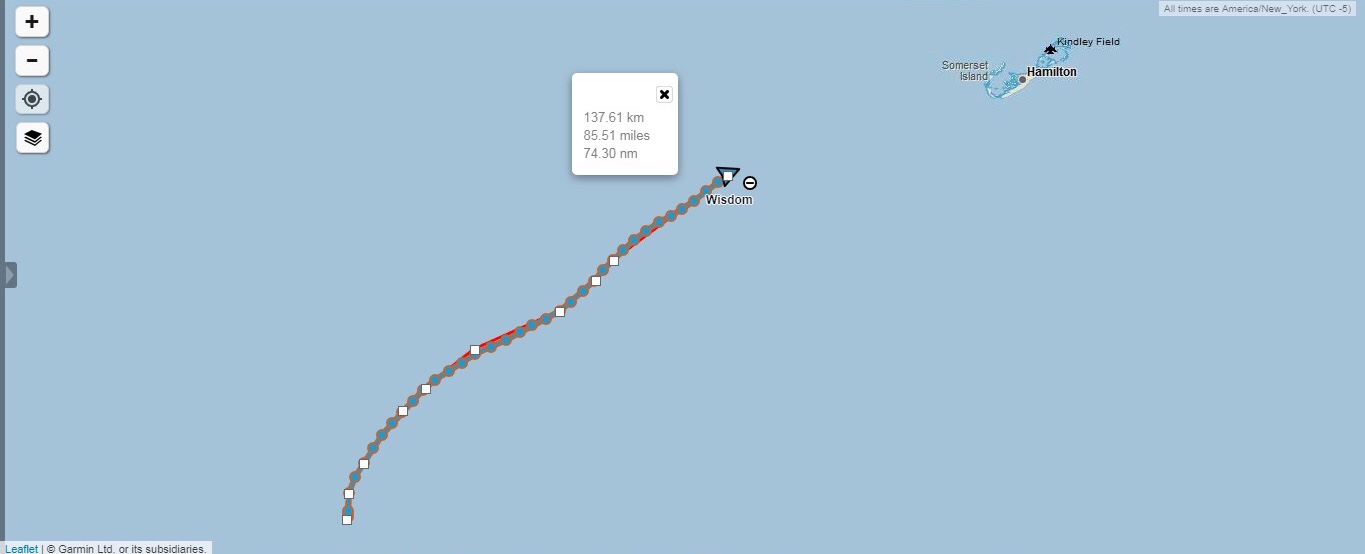We were sailing close to the island in strong winds during the morning, then the winds all seemed to vanish as another system was coming in. The next system was going to rage down on this little island for the next 4 days, so if we didn’t make it into the harbor today, we were going to be stuck hove to while we ride out a long duration gale. We did not want to do that.
We contacted Bermuda Radio and let them know that we were kind of stuck in the water without any wind and worried that we would be arriving at the entrance to the harbor (called Town Cut) in the dark. I knew this passage was very small, very tight, and with plenty of current and perils!
Bermuda Radio organized with a cruiser on a yacht that was already in the harbor to come out and meet us in the channel so that they could guide us into the harbor. We went from worrying about coming into the harbor in the dark to being guided by local knowledge as we slowly made our way into the island through the narrow pass.
We are often asked how we feel about the electric motor, and this is one of those moments when a diesel would have been nice. We would have cranked it on when the winds died and powered our way there in no time, come through the pass, and entered the harbor all on our own with no outside help. The truth is, the electric motor makes us more cautious sailors who plan everything and work with all the forces around us to safely navigate the ocean. If we had a diesel, we would have wanted to use it back in the doldrums, but that would have sucked up a lot of fuel! Would we have fuel in the tank at this point? If we are going to have a diesel motor, why go small, and only move at cruising speed, why not have a motor so inconceivably huge that it can power us at hull speed into wind and waves? Enough will never be enough and there will always be some drawback to any system in some situation. The secret is finding one that works well for you!
Yes, we love our electric motor just like someone loves their dog. You love it even when it poops in the kitchen! It is not perfect and, just like with a diesel motor, it has its drawbacks, but it is perfect for us.
We made it into the island and anchored safely in the harbor where the tall rocks of the island provided us wonderful protection from the winds that were soon to come.
We arrived in the harbor 1 day late. Our crew member began pondering if that was really so bad and if maybe he should carry on with us. Maddie and I quickly proclaimed that it would be best for him to fly back to Europe so that he doesn’t miss any scheduled deadlines he has imposed on himself. Besides, a day late is a day late, why start forgiving lateness now?
While we were in land now, we were not done yet, as we were tied to the customs pier. We were told that we could not stay tied to the pier because the pier needs to be open for other arriving yachts. We were the last boat to be checked in by the customs agents that night, and that it would be safest to move the boat at dawn when we could see better.















